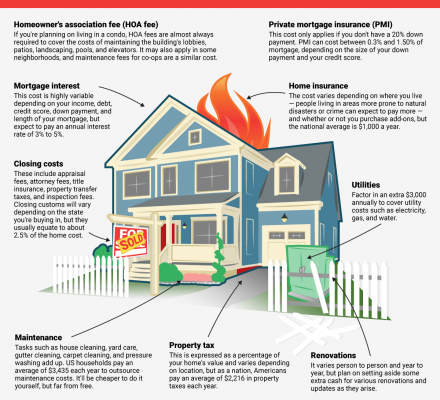Everyone has, at a particular stage, debated about adding the skill of multifamily property investing to their resume. Today, we will take a closer look at this topic and discuss the various strategies associated with this skill.
Multifamily Property – What Is It?
A multifamily property is a residential property encompassing more than one housing unit. Condominiums, duplexes, apartments, and townhomes are typical examples of such properties.
Sometimes, multifamily property owners choose to reside in one of these housing units, known as owner-occupied properties. Regardless of how you invest in such property, it can serve as a solid financial foundation.
However, the key to success in multifamily investment lies in creating a well-rounded investing strategy. And before you begin formulating your strategy, don’t forget to consider the following:
Find Your 50%
The best method for determining the potential profit of any deal is to crunch the numbers and assume a rough estimate of how much you can earn from a multifamily property. You can find the difference between your expected earnings—rent installments, capacity charges, stopping costs—and expenses, including maintenance and repairs.
However, if you can’t access this information on neighborhood comps, don’t worry. You can always use the 50% rule. To estimate your monthly operating expenses, multiply your property’s gross rent by fifty percent.
Calculate Your Cash Stream
Net cash stream or cash flow is the key indicator of any property’s financial health. You can find your net operating income by subtracting your total cash outflow from the total cash inflow.
Calculating the cash stream can help you decide the outcomes of an investment property and whether or not you should invest in it in the first place. Investment property with a positive cash stream is beneficial for a passive investor.
Determine the Cap Rate
Another basic analysis you should run is figuring out the cap or capitalization rate. It helps you indicate the investment return time and gauge the possible benefits of your real estate.
To find your cap rate, multiply your monthly NOI by 12 to obtain the annual income. Then, divide this calculated annual income by the property’s market price.
One essential thing to know is that a higher cap rate does not necessarily mean better. It indicates a higher risk. On the other hand, a lower cap rate denotes lower risk and smaller returns.
Ideally, it is best to go for a cap rate within the 5% to 10% range. Anything higher, and you will be vulnerable to more risks. Anything lower, and your investment’s yield may suffer.
Things to Consider When Investing in Multifamily Real Estate
As fascinating as the prospect of visiting a nearby open house during weekends and scrutinizing its details may seem, there is much more to multifamily real estate investments.
This investment strategy requires investors to contemplate various factors, including rental estimates, long-term and short-term costs, and purchase prices, to find the right property for investment purposes.
Based on this estimation, the investor decides between purchasing and renovating and giving up the specific property. Although these monetary figures can’t provide a true estimate of the worth of a property, they can still help you uncover primary concerns and essential elements influencing multifamily investing.
For those of you willing to put your money into a multifamily real estate investment, the journey begins with keeping the following checklist in mind:
Location
A good investment strategy is choosing an appropriate location or neighborhood. The property you are considering should be in an attractive location to attract more buyers or tenants than a single family home.
Number of Units
Investors can begin their property hunt by choosing between three kinds of multifamily properties. These include duplexes (two units), triplexes (three units), and fourplexes (four units). These properties are affordable for most first-time investors and have a greater chance of higher profits.
Expected Income
Your next step should be estimating the income of your property. Sites like Craigslist and Rentometer can be useful sources for verifying rental income and prices.
The 50 percent rule is also a recommendation. You can use 50 percent of your property’s income on expenditures rather than the mortgage. While most investors stay true to this method, it benefits beginner investors.
The Costs
Things can frequently shift for those in the real estate market, particularly for those investing in multifamily properties. Investors can live in one housing unit while renting another. Additionally, investors also consider three other components to help them find a good deal: credit, down payment, and debt-to-income ratio.
The Benefits of a Multifamily Investing Strategy
A multifamily property has no less than two units under one roof. It can come in different designs, the most notable being duplexes, condos, and other types of townhouses. As an investor, the upsides of possessing a multifamily property include the following:
Increased Money Stream
A single family property generates a single monthly income, whereas a multifamily property creates multiple consistent incomes. This appeals to multifamily property investors who live in one unit and rent the others for a steady monthly cash flow.
More Control Over Worth
The higher a property’s monthly income, the more value it holds. Multifamily investing strategies incorporate multiple components, each with its separate revenue. Therefore, a multifamily development can prove more beneficial than a single family home investment.
Larger Pool of Tenants
Another benefit of investing in a multifamily investing strategy is less risk. Even if the tenant(s) decides to vacate your unit, your income will not suffer significantly since you still have multiple tenants occupying other units.
Versatility
Multifamily properties encapsulate adaptability. As an investor, you can consider buying different properties inside one building instead of purchasing multiple single properties separately.
Tax Benefits
From large rental income to bonus depreciation, a multifamily asset can provide numerous tax benefits for investors and a greater investment return.
Bottom Line
Creating a multifamily investing strategy involves making many estimations and doing tons of calculations. Choosing the right multifamily investment strategy can result in more substantial benefits.




